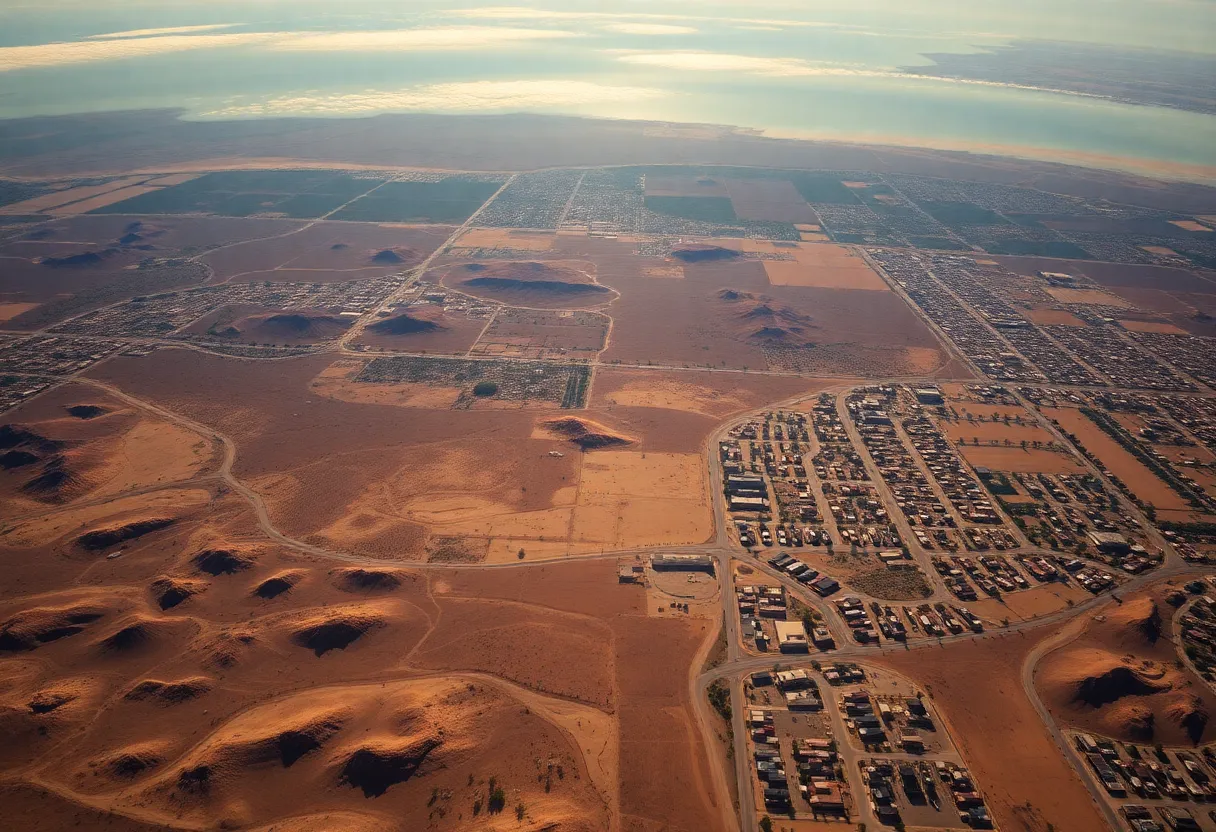News Summary
A study from UCLA reveals alarming trends in Southern California, with heat waves becoming longer and more intense at a rate surpassing global warming. Record-breaking summer temperatures pose severe risks to public health, agriculture, and infrastructure. Health officials have issued warnings and urged vulnerable populations to take necessary precautions. This escalation in extreme heat could have significant global implications, especially for regions already facing climate-related challenges.
Los Angeles
A new study from UCLA has revealed that heat waves in Southern California are lengthening and intensifying at a rate that outpaces global warming. The research underscores an alarming trend in which even minor increases in temperature significantly elevate the risk of severe and prolonged heat waves.
The study, published in Nature Geoscience, involved a collaborative effort from researchers at UCLA and the Universidad Adolfo Ibañez in Santiago, Chile. The findings suggest that heat waves lasting weeks are becoming more frequent, with the longest ones showing the greatest increase. This summer’s heat wave has already led to record-breaking temperatures, including a shocking 118 degrees in Palm Springs, while areas throughout the Eastern U.S. are also experiencing their own extreme weather patterns.
According to climate scientist David Neelin from UCLA, every fraction of a degree of warming has a more substantial impact than previous increases. This gradual rise in temperature translates into longer and more intense heat waves, which pose severe threats to people, agriculture, and infrastructure in the region.
Health Risks and Safety Measures
The current heat wave in Southern California has prompted health concerns, particularly for vulnerable populations. The National Weather Service has issued a heat advisory for areas expecting temperatures between 97 to 104 degrees. Health officials have urged residents to stay hydrated, avoid strenuous activities, and seek refuge at cooling centers. The Los Angeles County Health Department has recorded rising health issues related to the heat, which is especially dangerous for individuals with preexisting conditions.
Additionally, beachgoers are advised against swimming in specific areas due to elevated bacteria levels amid the extreme temperatures. This poses yet another risk as summer activities ramp up—influencing public health and safety measures.
Impact on Agriculture and Environment
Longer and more intense heat waves are projected to have dire consequences for agriculture as well. Many crops are at risk of failing under sustained high temperatures. The dry conditions resulting from prolonged heat waves will also exacerbate wildfire risks, threatening both natural landscapes and human infrastructures.
In the context of potential global impacts, forests in regions especially vulnerable to climate change face increased threats from wildfires, directly driven by these rising heat levels.
Global Trends and Projections
The study indicates that areas around the world will experience more frequent heat waves as global warming continues to accelerate. Specifically, extreme heat waves in equatorial Africa lasting 35 days or more are predicted to occur 60 times more frequently from 2020 to 2044 compared to the years 1990-2014. The implications of these projections are severe, as some regions are expected to see fundamental changes in their climate patterns, particularly in tropical areas such as Southeast Asia, South America, and Africa.
Calls for Improved Research and Adaptation Strategies
The accelerating rate of extreme heat events demands a faster adaptation response. Neelin stressed the importance of developing more accurate weather and climate models to provide effective public warnings about extreme heat. Current data suggests that the tools available for assessing climate change impacts on global temperatures need to be refined, especially concerning factors like soil moisture and wildfire risks.
Criticism has been directed at budget cuts to climate research by previous administrations, which have reportedly hindered the ability to conduct essential studies for effective risk management and adaptation strategies in response to climate change.
The circumstances surrounding the prolonged heat season signal an urgent need for strategies to protect public health, agriculture, and the environment. As communities brace for more extreme heat events, the importance of preparedness and adaptability in the face of climate change has never been more apparent.
Deeper Dive: News & Info About This Topic
HERE Resources
California Faces Congressional Challenge to Gas-Powered Car Ban
Southern California Braces for Weather Changes After Heat Wave
Meta Unveils New AI Chatbot and Llama API at Developer Conference
UCLA Bruins Prepare for Spring Football Finale
California’s Workers’ Compensation Landscape for 2025 Revealed
California Senate Committee Passes Bill to Limit Freight Train Length
Gene Simmons Lists Luxurious Beverly Hills Home for $14 Million
Beverly Hills Mansion of Menendez Brothers Undergoes Renovation
Jacksonville Expands Industrial Sector with Imeson Commerce Center
Nico Iamaleava Transfers from Tennessee to UCLA
Additional Resources
- Los Angeles Times: Triple-Digit Temperatures on Deck as Heat Wave Hits Southern California
- Wikipedia: Heat Wave
- KTLA: Heat Advisories in Place as Southern California Braces for Heat Wave
- Google Search: Heat Wave
- CBS News: Triple-Digit Heat Wave Temperatures
- Google Scholar: Heat Waves Impact Health
- San Francisco Chronicle: California Heat Wave – Highest Temperatures
- Encyclopedia Britannica: Global Warming
- My News LA: Southern California to Continue Feeling the Heat of Summer
- Google News: Southern California Heat Wave

Author: STAFF HERE BEVERLY HILLS WRITER
The Beverly Hills Staff Writer represents the experienced team at HEREBeverlyHills.com, your go-to source for actionable local news and information in Beverly Hills, Los Angeles County, and beyond. Specializing in "news you can use," we cover essential topics like product reviews for personal and business needs, local business directories, politics, real estate trends, neighborhood insights, and state news affecting the area—with deep expertise drawn from years of dedicated reporting and strong community input, including local press releases and business updates. We deliver top reporting on high-value events such as the Rodeo Drive Concours d'Elegance, the Beverly Hills artSHOW, Concerts on Canon, and holiday celebrations throughout the city. Our coverage extends to key organizations like the Beverly Hills Chamber of Commerce and Visit Beverly Hills, plus leading businesses in luxury fashion, hospitality, and entertainment that drive the local economy. As part of the broader HERE network, including HERELosAngeles.com, HERESantaAna.com, HEREHuntingtonBeach.com, and HERECostaMesa.com, we provide comprehensive, credible insights into Southern California's dynamic landscape.




